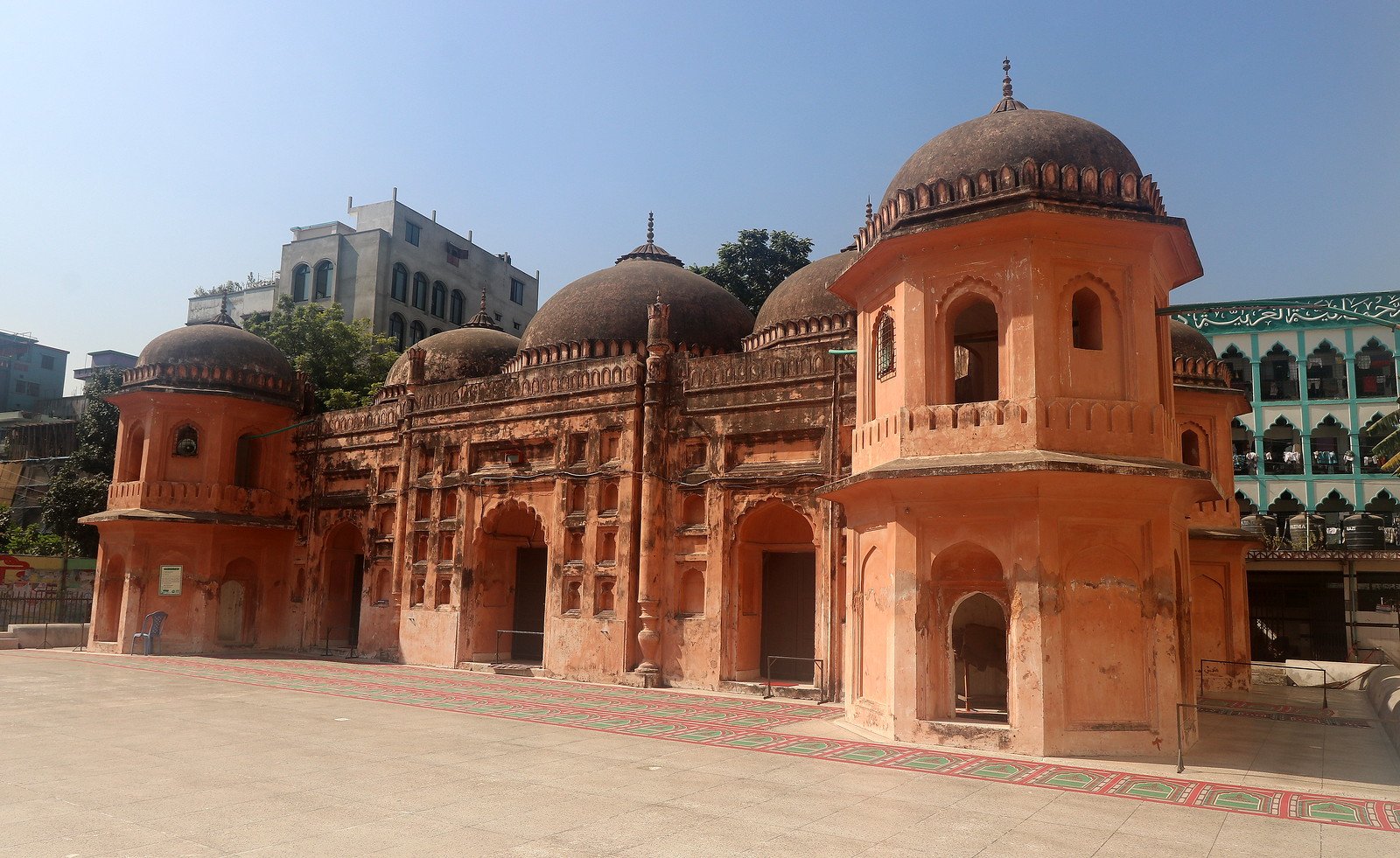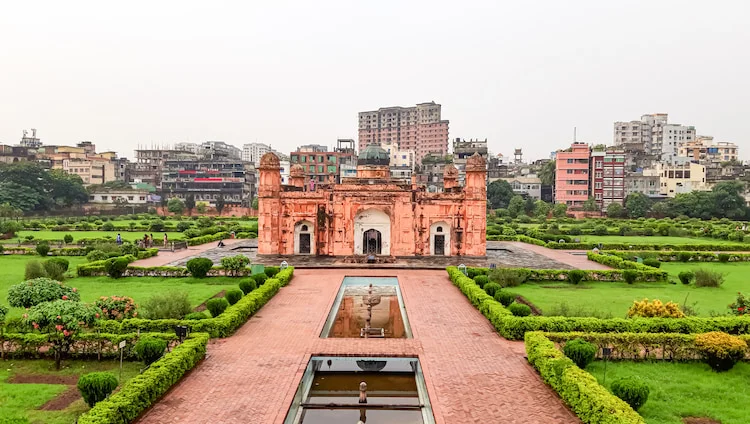Lalbagh Fort: Mughal Masterpiece & Pari Bibi’s Tragic Tale
Resting in the bustling heart of Old Dhaka, Bangladesh, stands a monument that whispers tales of power, love, and unfulfilled dreams: Lalbagh Fort. This unfinished masterpiece of the Mughal Empire is more than just a historical structure; it is a vital symbol of Dhaka’s rich heritage, drawing millions of visitors each year to marvel at its architectural splendor and delve into its captivating past. For any history enthusiast or traveler exploring South Asia, a visit to Lalbagh Fort is an absolute necessity.
A Legacy Etched in Red Brick: The Story of Lalbagh Fort
The story of Lalbagh Fort begins in 1678 AD, under the patronage of Prince Muhammad Azam Shah, the third son of the mighty Mughal Emperor Aurangzeb. Originally conceived as the official residence for the Governor of the Mughal province of Bengal, Bihar, and Orissa, the fort was initially named Fort Aurangabad. Prince Azam Shah laid the foundation and began the extensive work, aiming to create a fort that would be a miniature reflection of the great imperial complexes in Delhi and Agra. The reddish hue of the soil and the materials used is why the complex eventually gained the name Lalbagh Fort, which translates to ‘Red Garden’.
However, fate intervened, leading to the fort’s incomplete status. After only 15 months, Prince Azam Shah was called away by his father to assist in the war against the Marathas. The task of completing the majestic fortress was then handed over to the new Subahdar (Governor) of Bengal, Shaista Khan, a renowned figure in Mughal history.
Shaista Khan continued the project for a few years, but in 1684, tragedy struck. His beloved daughter, Iran Dukht Rahmat Banu, widely known as Pari Bibi (Fairy Lady), died within the fort complex. Devastated and superstitious that the site brought ill-fortune, Shaista Khan abruptly stopped all construction. The fort, which was meant to be a grand seat of imperial power, was thus abandoned, remaining an eternal testament to a father’s grief and a prince’s unfulfilled ambition. Even in its incomplete state, the surviving structures of Lalbagh Fort offer a profound insight into Mughal architectural prowess.
Architectural Marvels Within the Walls
Covering a substantial area, the Lalbagh Fort complex is laid out in the classic Mughal Charbagh style—a quadrilateral garden layout based on the four gardens of Paradise.The symmetrical pathways, water channels, and manicured gardens provide a tranquil escape from the clamor of the modern city. The complex is anchored by three primary surviving structures, connected by an axis of fountains and water channels:
1. The Tomb of Pari Bibi
The most poignant and architecturally significant building in the entire complex is the mausoleum of Pari Bibi. Unlike the brick architecture prevalent in Bengal, this structure stands out for its luxurious use of materials imported from distant parts of the Mughal Empire. The central chamber, which holds the remains of the princess, is exquisitely veneered entirely in pristine white marble, with the inner walls adorned with black basalt from Rajmahal and encaustic tiles of various colors. The tomb’s central placement in the fort reinforces its role as the unfortunate focal point of the site’s history. It is a stunning, singular example of tomb architecture in Bengal. The elegance and tragic story surrounding the Tomb of Pari Bibi make it an unforgettable part of the Lalbagh Fort experience.
2. Diwan-i-Aam and Hammam
The Diwan-i-Aam, or the Hall of Public Audience, is a two-storied residence and administrative block. It was here that the Mughal Governor, Shaista Khan, would hold court, conducting official business and meeting with the public. A single-storied Hammam (bathhouse) is attached to the west of the Diwan-i-Aam. This building is the only structure within Lalbagh Fort that is fully accessible to visitors, housing a small but fascinating museum.20 Inside, one can view a collection of Mughal-era artifacts, including miniature paintings, coins, carpets, calligraphy, swords, and firearms, providing context to the era in which Lalbagh Fort was built. The Diwan-i-Aam offers a clear depiction of the governor’s life and the administrative heart of Mughal Bengal.
3. The Quilla Mosque
Located on the western side of the complex and aligned with Pari Bibi’s tomb, the Quilla Mosque is a beautiful example of the three-domed Mughal style of mosque architecture.23 Its elegant, understated design continues to serve as a place of worship today, reminding visitors that the fort was not merely a palace but a functioning town within fortified walls.
Myths, Mysteries, and the British Era
Over the centuries, the unfinished Lalbagh Fort has accumulated a rich layer of folklore and mystery. Tales of secret tunnels leading all the way to Delhi or Agra, which were likely defensive escape routes to the Buriganga River, persist. Furthermore, the fort played a grim role during the Sepoy Mutiny (Great Rebellion) of 1857, where it served as a site of a bloody confrontation between native soldiers and the British forces.25 Legends claim that some of the native soldiers who took refuge in the hidden underground tunnels never emerged, adding a layer of haunting intrigue to the fort’s already captivating history.
Plan Your Visit to Lalbagh Fort
Today, the fort stands as one of Dhaka’s most treasured heritage sites, meticulously maintained to preserve its historical and architectural integrity. A visit here is a journey back in time, allowing you to walk through the same gardens and halls as Mughal royalty.
Visitor Information:
| Time of Year | Days | Visiting Hours |
| Summer (April to September) | Tuesday – Saturday | 10:00 AM to 6:00 PM |
| Monday | 2:00 PM to 6:00 PM | |
| Winter (October to March) | Tuesday – Saturday | 9:00 AM to 5:00 PM |
| Monday | 1:30 PM to 5:00 PM | |
| Weekly Holiday: | Sunday & all government holidays | Closed |
Ticket Prices (Approximate):
| Visitor Category | Ticket Price (BDT) |
| Bangladeshi Nationals | 30.00 Taka |
| SAARC Country Visitors | 100.00 Taka |
| Other Foreign Nationals | 200.00 Taka |
Lalbagh Fort is easily accessible via rickshaw or CNG auto-rickshaw from any part of Dhaka. It is recommended to visit in the early morning or late afternoon to experience the soft sunlight illuminating the fort’s red brick walls, which is an absolute treat for photographers. Allow at least two to three hours to fully explore the grounds, the museum, the serene gardens, and the spectacular Tomb of Pari Bibi.
Conclusion
The unfinished grandeur of Lalbagh Fort is a poignant and powerful reminder of the Mughal era’s brief but spectacular dominion in Bengal. It encapsulates a pivotal moment in history—a project begun in glory and abandoned in sorrow. Its walls hold centuries of history, from royal decrees to tragic love stories and colonial resistance. More than just a fortress, Lalbagh Fort is an enduring cultural landmark and a must-see destination that provides a beautiful, serene, and historically rich counterbalance to the modern metropolis of Dhaka. Don’t miss the chance to explore this architectural gem and witness the legacy of Lalbagh Fort for yourself.






